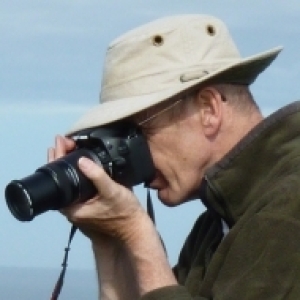Coupling
No apologies for giving you Common Darters again so soon after their last appearance.
Took Mrs L to see the local water rail. We probably spent around 45 minutes in the hide during which the water rail showed for about 45 seconds and that's the photo you'd have got had it not been for us catching these two on the hand rail outside. It's a shame they couldn't have chosen somewhere more photogenic, but if you view in LARGE I'm sure you'll forgive them!
For those of you who're not just voyeuristic, here's a bit of information on what they're up to:
Courtship in Dragonflies is minimal or absent. It may take place but may be too short lived or subtle to be observed. With most Dragonflies it is a straight forward grab of the female if she is willing. She will not respond if she has already mated.
Once the Dragonflies male has grasped the female at the back of her head with his anal claspers the act of mating can take place in the air, on the ground or perched amongst vegetation. It can last a matter of seconds or up to several hours. The processes and the genital structures involved are quite unique in the insect world.
Some time before mating, often many hours before , since it may be the first thing the male performs on reaching his perch in the morning, the male dragonfly transfers his sperm from his normal genital opening near the end of the abdomen to the unique accessory genitalia situated below the second and third abdominal segments. This is done by bending the tip of his abdomen around until it touches the accessory organs either in flight or when perched. The accessory organs are then 'charged ' ready with sperm for direct contact with the female copulatory organs, which lie at the tip of her abdomen. These accessory genitalia consist of a sperm bladder for storage of sperm; a structure which corresponds in function to a penis; and some grasping organs which can grip the female's copulatory organs during mating.
Copulation takes place after the male has grasped the female by the process of her bending her abdomen round so that the genitalia at the tip meet with his accessory genitalia below segments two and three. The pair are now attached to each other in two points and this mating position is known as the wheel or' heart position'. In some species mating takes place in the air in a matter of seconds but in most species it is more leisurely and may last for an hour or so.
Some species remain in contact for the egg laying process whilst other males separate and fly above the female keeping other males at a discrete distance. Some species scatter their eggs, some lay in floating vegetation.
- 11
- 4
- Canon EOS 550D
- f/10.0
- 200mm
- 500

Comments
Sign in or get an account to comment.


